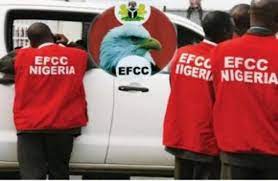World
U.S Increases Interest Rates, Signals Aggressive Battle Against Inflation
U.S Increases Interest Rates, Signals Aggressive Battle Against Inflation
The Federal Reserve on Wednesday raised interest rates by a quarter of a percentage point and laid out an aggressive plan to push borrowing costs to restrictive levels by next year as concerns about high inflation and the war in Ukraine overtook the risks of the coronavirus pandemic.
The U.S. central bank, in a surprise move, projected the equivalent of quarter-percentage-point rate increases at each of its six remaining policy meetings this year, which would push its benchmark overnight interest rate to a range between 1.75% to 2.00% by the end of 2022. It is projected to further rise to 2.80% by the end of next year, above the 2.40% level officials now feel would slow the economy.
Fed Chair Jerome Powell, speaking after the end of the latest two-day policy meeting, said the economy is strong and that officials will raise rates more aggressively at future meetings if needed to control inflation.
“The way we’re thinking about this is that every meeting is a live meeting,” Powell said in a news conference. “We’re going to be looking at evolving conditions, and if we do conclude that it would be appropriate to move more quickly to remove accommodation, then we’ll do so.”
Powell said the U.S. economy is strong and should “flourish” even in an environment where borrowing costs are rising and stimulus is being removed. “It’s clearly time to raise interest rates and begin the balance sheet shrinkage,” he said.
An economic slowdown, however, may already be underway. Fed policymakers marked down their gross domestic product growth estimate for 2022 to 2.8%, from the 4% projected in December, as they began to discount the new risks facing the global economy.
“The invasion of Ukraine by Russia is causing tremendous human and economic hardship. The implications for the U.S. economy are highly uncertain, but in the near term the invasion and related events are likely to create additional upward pressure on inflation and weigh on economic activity,” the Fed said in its policy statement.
STUBBORN INFLATION
The statement, which dropped the now longstanding direct reference to the coronavirus as the most direct economic risk facing the country, marked the end of the Fed’s full-on battle against the pandemic, as it raised the federal funds rate and pledged “ongoing increases” to curb the highest inflation rates in 40 years.
The interest rate path shown in new projections by policymakers is tougher than expected, reflecting Fed concern about inflation that has moved faster and threatened to become more persistent than expected, and put at risk the central bank’s hope for an easy shift out of the emergency policies put in place to fight the fallout from the pandemic.
Major U.S. stock indexes briefly pared gains after the release of the statement and projections before recovering, with the S&P 500 (.SPX) index last up about 1.1% on the day.
The yield on the benchmark 10-year Treasury note briefly rose to its highest level since May 2019, while the 2-year Treasury yield , which better reflects market views of where Fed policy is going, briefly topped the 2.0% level for the first time since May 2019. The dollar was trading slightly lower.
Even with the tougher rate increases now projected, the Fed expects inflation to remain more than double its 2% target this year, dropping to 2.7% in 2023 and to 2.3% in 2024. The unemployment rate is seen dropping to 3.5% this year and remaining at that level next year, but is projected to rise slightly to 3.6% in 2024.
The new statement said the Fed expects to begin reducing its nearly $9 trillion balance sheet “at a coming meeting.”
St. Louis Fed President James Bullard was the only policymaker to dissent in Wednesday’s policy decision.


 Top Stories20 hours ago
Top Stories20 hours agoBREAKING: EFCC freezes over 300 accounts over suspicious FX flows

 Top Stories20 hours ago
Top Stories20 hours agoEx-Imo Gov, Ihedioha Dumps PDP, Gives Reason

 Politics20 hours ago
Politics20 hours ago“If I do not see the Yahaya Bello case to the end, I will resign” – Olukoyede

 Top Stories7 hours ago
Top Stories7 hours agoYahaya Bello: Do Not Allow Yourself Become A Tool Of Political Vendetta And Intimidation – Kogi Assembly To EFCC

 Sports7 hours ago
Sports7 hours agoNBA playoffs: Timberwolves cruise past Suns for 2-0 lead despite off night from Anthony Edwards, Karl-Anthony Towns

 News6 hours ago
News6 hours agoBlack Market Dollar (USD) To Naira (NGN) Exchange Rate Today 24th April 2024

 Entertainment6 hours ago
Entertainment6 hours agoBREAKING: Popular Veteran Nollywood Actor is Dead [Video]

 News8 hours ago
News8 hours agoFG Summons Lead British School Management Over Bullying






